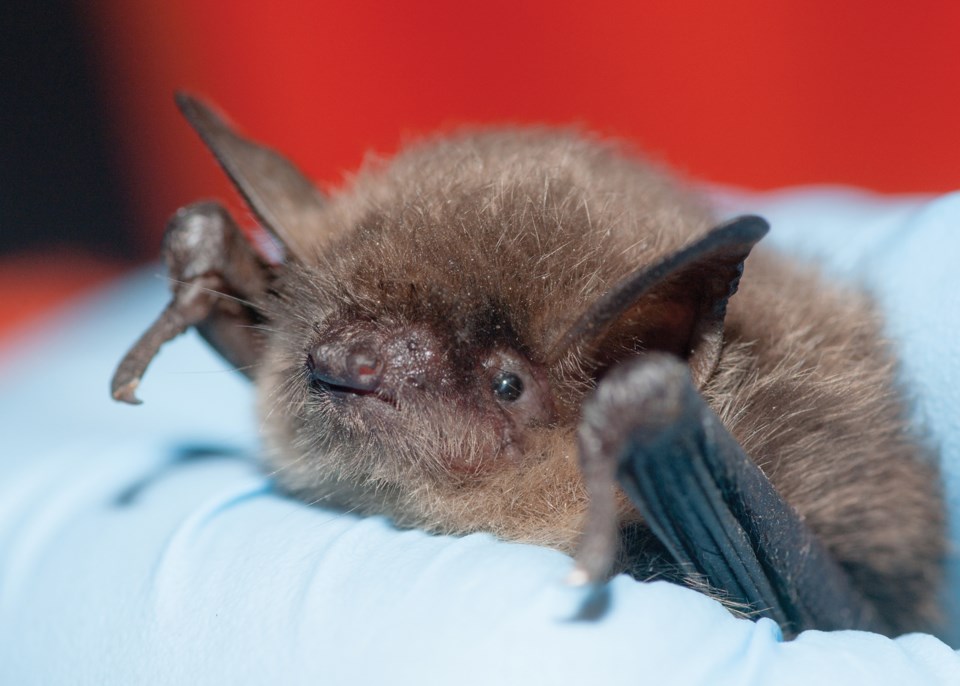B.C. bats are threatened by disease, and the Sunshine Coast Wildlife Project and B.C. Community Bat Program continue to ask community members for help. White-nose syndrome (WNS), a fungal disease responsible for the death of millions of bats in eastern North America, is spreading on the west coast. Confirmed in Washington State, just 150 km south of the Canada-U.S. border, the disease has near 100 per cent mortality for some bat species.
Tracking the spread of the disease relies on public assistance. “Detecting WNS in B.C. is challenging because our bats hibernate in small groups across the province,” says Wildlife Project leader Michelle Evelyn. “To monitor the spread of the disease, we need more eyes on the ground. Outdoor enthusiasts and homeowners with roosts on their property may be the first to find evidence of trouble.”
Signs of the disease include unusual bat activity in winter and the appearance of dead bats outdoors as they succumb to the effects of WNS. Residents are asked to report dead bats right away by emailing [email protected] or calling 604-989-1007. Bat carcasses will be collected for testing and would provide the earliest indication of the disease in B.C.
While bats are generally hibernating out of sight this time of year, not every winter bat sighting signals disaster. Bats often hibernate by themselves in a woodpile or basement entryway. If possible, these sleeping bats should be left alone – keep your distance, snap a photo, and report to the Wildlife Project. Remember to never touch a bat with your bare hands.
Bats are also occasionally spotted flying on relatively warm winter days or evenings. Healthy bats may wake up to drink or even eat, if insects are active. Enjoy these sightings and report where winter bat activity was observed. These reports help focus research, monitoring, and protection efforts.
Currently there are no treatments for white nose syndrome. However, mitigating other threats to bat populations and preserving and restoring bat habitat may provide bat populations with the resilience to rebound. Bat conservation efforts on the Sunshine Coast are supported by the Habitat Conservation Trust Foundation, Forest Enhancement Society of B.C., the Province of B.C., Habitat Stewardship Program, B.C. Naturalists’ Foundation, and the Fish and Wildlife Compensation Program. For more information about bats, see bcbats.ca or www.facebook.com/coastwildlife.
– Submitted



